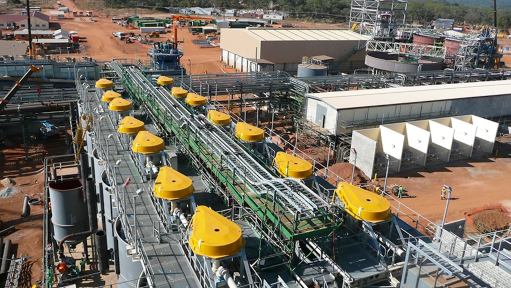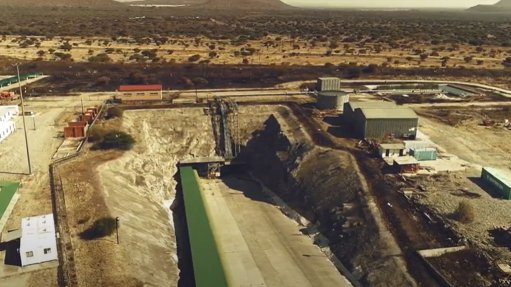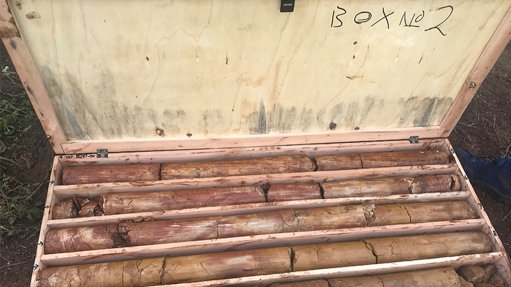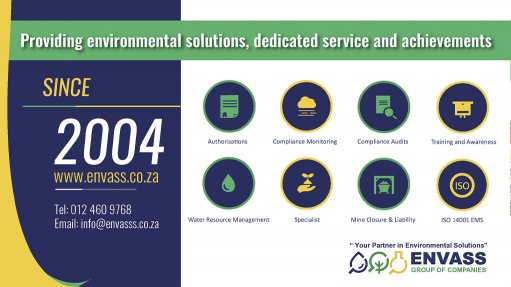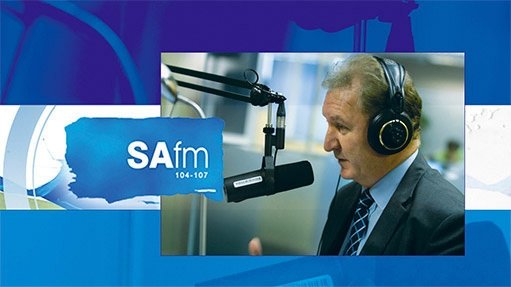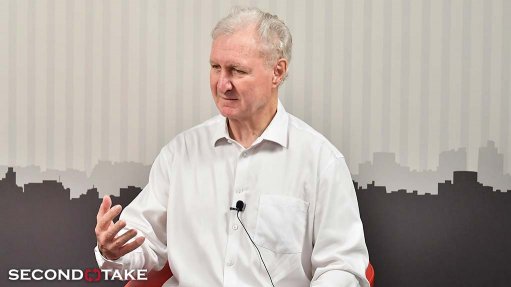South Africa’s rare earths project in Limpopo seen as one of world’s most resilient

Rainbow Rare Earths CEO George Bennett’s Mintek90 presentation covered by Mining Weekly’s Martin Creamer. Video: Darlene Creamer.
JOHANNESBURG (miningweekly.com) – The rare earths recovery project underway in South Africa’s Limpopo province is regarded as one of the world’s most resilient rare earths projects at a time when these elements are in growing demand for use in permanent magnets to help the world go green.
Involved is the first commercial recovery of rare earth elements (REEs) from phosphogypsum, which makes project developer Rainbow Rare Earths something of a pioneer.
Rainbow calculates that it has a highly economic grade of rare earths in the gypsum stacks at Phalaborwa, where the 35-million-tonne resource provides a 16- year life of project that will recover four of the world’s most sought after REEs.
Some 150 000 t of these rare earths will be produced at an operating expenditure (opex) believed to be the lowest of any project in the West and probably even below that of projects in the East.
Low opex and relatively high grade make the project a hardy front-runner at a time when none of the world's REE projects are making money at current pricing.
Two months ago, even when the prices of the two key permanent magnet REEs – neodymium and praseodymium – were at a low $47/kg to $48/kg, Rainbow would have been profitable had it been in production.
Prices have since recovered to about $60/kg for the two elements, which in 2022 were at $180/kg – and all the forecasts are that rare earth prices will rise still further.
“We believe this is one of the most resilient rare earths projects in the world,” George Bennett, the CEO of the London-listed South Africa-led Rainbow, proclaimed at this week’s Mintek@90 event, covered by Mining Weekly. (Also watch the attached Creamer Media video.)
The event was held to mark Mintek’s nine decades of pioneering contributions in the minerals and metallurgy sector by South Africa’s Council for Mineral Technology, which derives its mandate from the Minerals Technology Act.
The large-scale pilot plant, which was built as part of Rainbow’s close collaboration with Mintek since 2022, operated at the high level of 20 kg per hour of feed, making it six to ten times the size of a normal pilot plant. A phosphate gypsum reclaim trial in February was very successful and the plant will be rerun in January/February to prove up final stage separation.
The availability of phosphogypsum is the result of the mining of a hard-rock phosphate deposit, which has been carried out by Foskor for the last 60 years.
The mined material is concentrated through a flotation process into a phosphate slurry, which over the period has been the feed for a nearby phosphoric acid plant, where two key ingredients were added, namely sulphuric acid and heat to create phosphoric acid.
The rare earths in the phosphate slurry were further upgraded in the phosphoric acid sludge in the phosphoric acid plant and then that phosphoric acid production created a gypsum waste residue that was transported in a concentrated form to the gypsum stacks.In conjunction with Mintek, Rainbow has developed a one-of-a-kind flowsheet that enables the commercial extraction of key rare earths out of the phosphogypsum.
Displayed on a large screen was an old opencast mine that had been mined for many years, an old Sasol phosphoric acid plant that had not been operating for ten years and two unlined environmentally hazardous gypsum stacks.
“Rainbow’s project’s going to clean this all up into a very environment-friendly state,” Bennett promised.
The ready-fenced and power-lined site has a high-voltage switch yard, reflecting the advantages brownfield project development.
Comments
Press Office
Announcements
What's On
Subscribe to improve your user experience...
Option 1 (equivalent of R125 a month):
Receive a weekly copy of Creamer Media's Engineering News & Mining Weekly magazine
(print copy for those in South Africa and e-magazine for those outside of South Africa)
Receive daily email newsletters
Access to full search results
Access archive of magazine back copies
Access to Projects in Progress
Access to ONE Research Report of your choice in PDF format
Option 2 (equivalent of R375 a month):
All benefits from Option 1
PLUS
Access to Creamer Media's Research Channel Africa for ALL Research Reports, in PDF format, on various industrial and mining sectors
including Electricity; Water; Energy Transition; Hydrogen; Roads, Rail and Ports; Coal; Gold; Platinum; Battery Metals; etc.
Already a subscriber?
Forgotten your password?
Receive weekly copy of Creamer Media's Engineering News & Mining Weekly magazine (print copy for those in South Africa and e-magazine for those outside of South Africa)
➕
Recieve daily email newsletters
➕
Access to full search results
➕
Access archive of magazine back copies
➕
Access to Projects in Progress
➕
Access to ONE Research Report of your choice in PDF format
RESEARCH CHANNEL AFRICA
R4500 (equivalent of R375 a month)
SUBSCRIBEAll benefits from Option 1
➕
Access to Creamer Media's Research Channel Africa for ALL Research Reports on various industrial and mining sectors, in PDF format, including on:
Electricity
➕
Water
➕
Energy Transition
➕
Hydrogen
➕
Roads, Rail and Ports
➕
Coal
➕
Gold
➕
Platinum
➕
Battery Metals
➕
etc.
Receive all benefits from Option 1 or Option 2 delivered to numerous people at your company
➕
Multiple User names and Passwords for simultaneous log-ins
➕
Intranet integration access to all in your organisation







